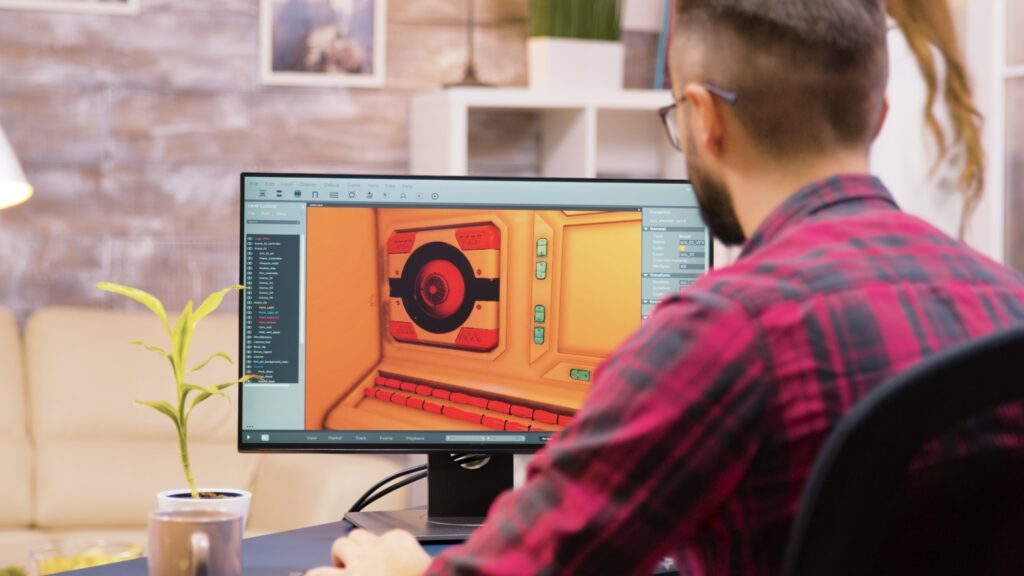Real-time animation rendering is a crucial aspect of the animation industry, allowing animators to see their creations come to life instantly.
In this article, we will discuss real-time animation rendering, exploring its significance, techniques, and applications in the industry.
Understanding Real-Time Animation Rendering
Real-time animation rendering generates animated images or sequences in real-time, enabling animators to visualize their work instantly. This technology has revolutionized the animation industry by allowing artists to make immediate changes and adjustments to their animations, leading to more efficient workflows and faster production times.
The Significance of Real-Time Animation Rendering
Real-time animation rendering plays a pivotal role in various sectors, including film, television, video games, and virtual reality. By allowing animators to see their animations in real-time, this technology enhances the creative process, enabling artists to experiment with different visual effects, lighting scenarios, and camera angles on the fly.
Moreover, real-time animation rendering is essential for interactive applications such as video games and virtual reality experiences, where instant feedback and responsiveness are critical. By leveraging real-time rendering techniques, developers can create immersive and engaging experiences that captivate audiences and offer a seamless user experience.
Techniques for Real-Time Animation Rendering
Several techniques are employed in real-time animation rendering to achieve optimal visual quality and performance. One common approach is rasterization, where 3D models are converted into 2D images by projecting them onto a 2D plane. This technique is widely used in real-time applications due to its efficiency and ability to render complex scenes quickly.
Another popular technique is ray tracing, which simulates the behavior of light rays in a scene to create realistic lighting and reflections. While ray tracing is computationally intensive, recent advancements in hardware acceleration have made real-time ray tracing feasible for interactive applications, leading to stunning visual results.
Applications of Real-Time Animation Rendering
Real-time animation rendering finds applications in a wide range of industries, from entertainment to architecture and engineering. In the entertainment industry, real-time rendering is used to create visually stunning effects in films, television shows, and video games. By harnessing the power of real-time rendering engines, artists can bring their creative visions to life with unparalleled realism and detail.
In architecture and engineering, real-time rendering is utilized to visualize building designs, simulate lighting conditions, and evaluate construction projects. By rendering architectural models in real-time, designers and engineers can make informed decisions, identify potential issues, and communicate their ideas effectively to clients and stakeholders.
The Future of Real-Time Animation Rendering
As technology continues to advance, the future of real-time animation rendering looks promising. With the advent of real-time ray tracing, machine learning, and cloud computing, animators can expect even greater realism, interactivity, and efficiency in their workflows.
The integration of AI-driven tools and real-time collaboration features will further streamline the animation production process, enabling artists to focus on creativity and storytelling.
Conclusion
Real-time animation rendering is a game-changer in the animation industry, empowering artists to create captivating visuals and immersive experiences. By mastering the techniques and applications of real-time rendering, animators can stay ahead of the curve and unlock new possibilities in their creative endeavors.
Key Takeaways:
- Real-time animation rendering is a vital technology in the animation industry, offering instant visualization and efficient workflows.
- It plays a crucial role in film, TV, video games, and VR, enhancing creativity and user experience.
- Techniques like rasterization and ray tracing are commonly used for optimal visual quality.
- Real-time rendering is applied in entertainment, architecture, and engineering for realistic visualizations.
- The future of real-time animation rendering holds exciting advancements in realism and efficiency.
Consider enhancing your skills and knowledge in real-time animation rendering by enrolling in the NYU Animation Industry Essentials online course and certificate program offered by Yellowbrick.
This comprehensive program will provide you with the expertise and tools needed to excel in the dynamic world of animation rendering. Explore the endless possibilities and kickstart your career journey today!








